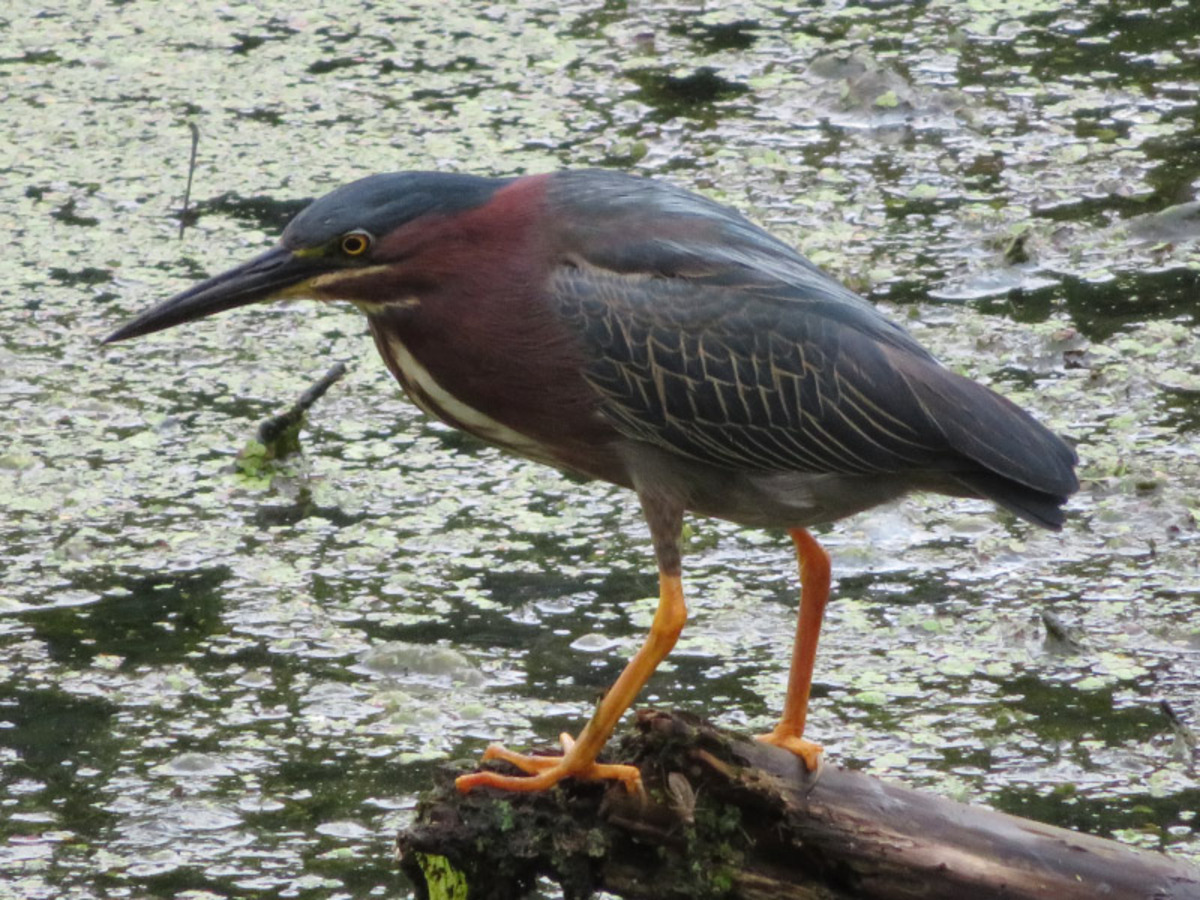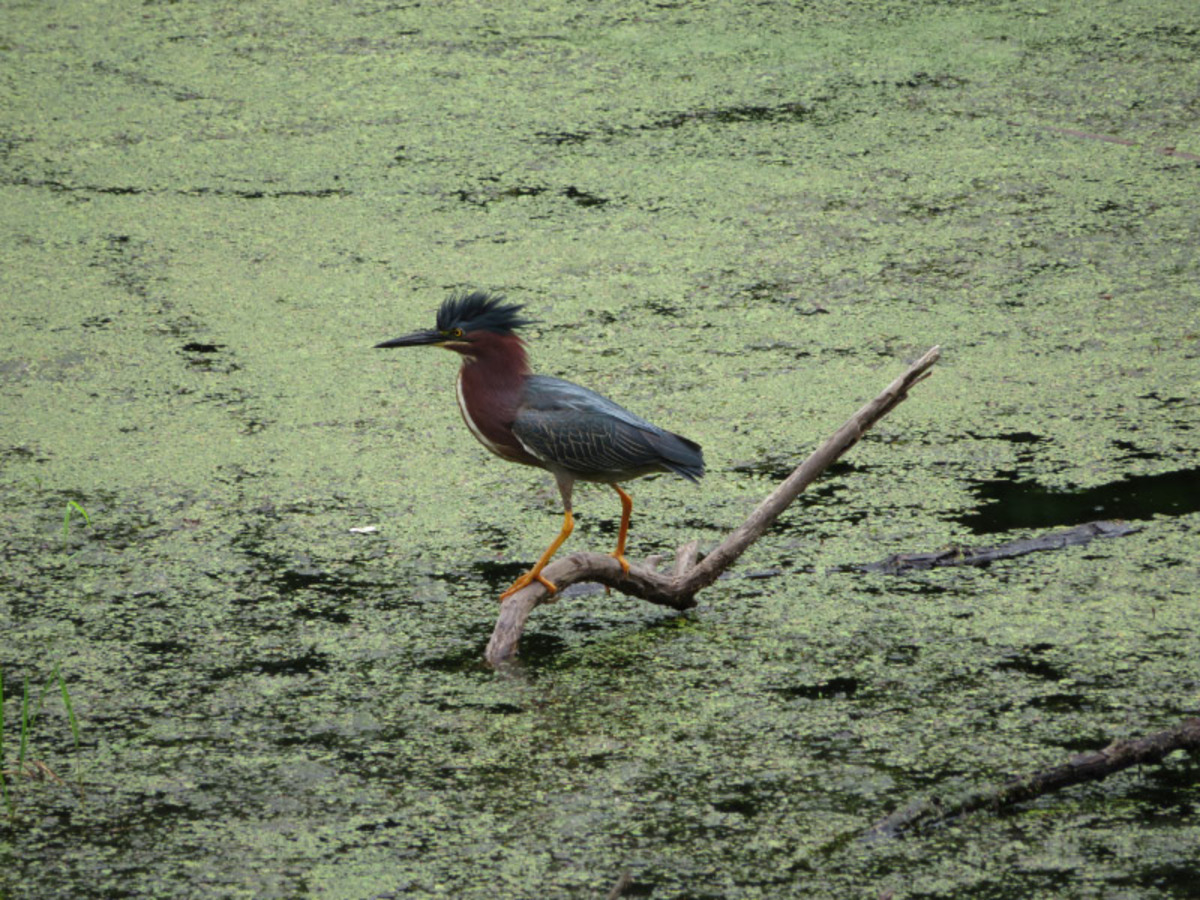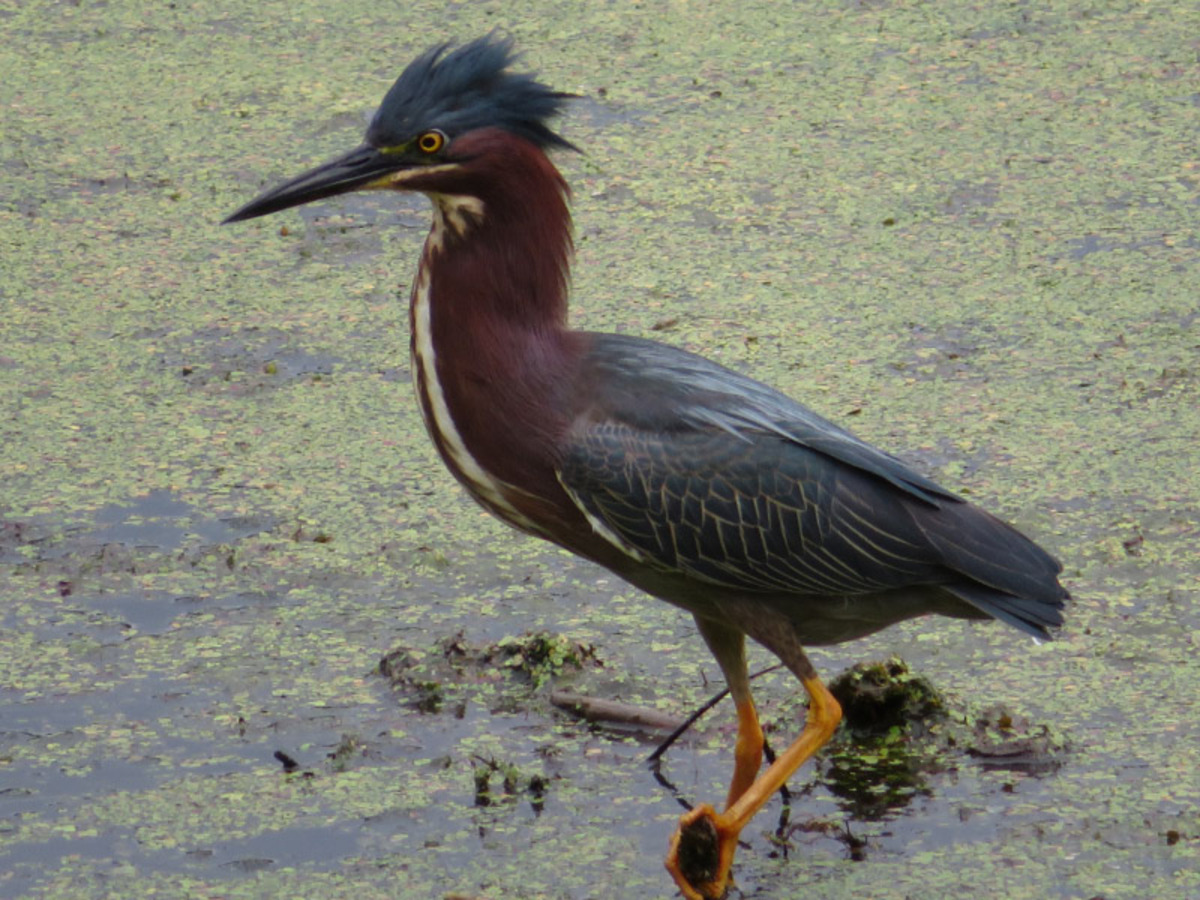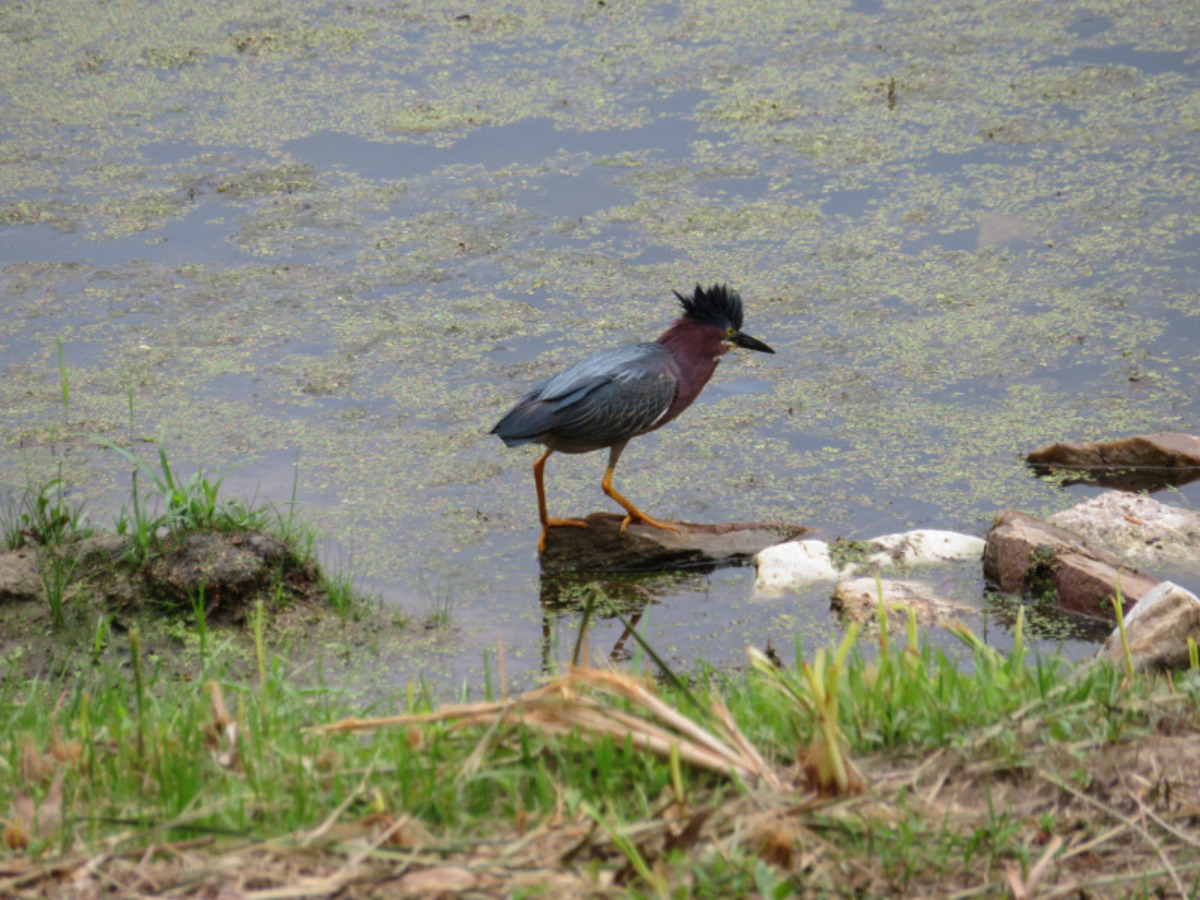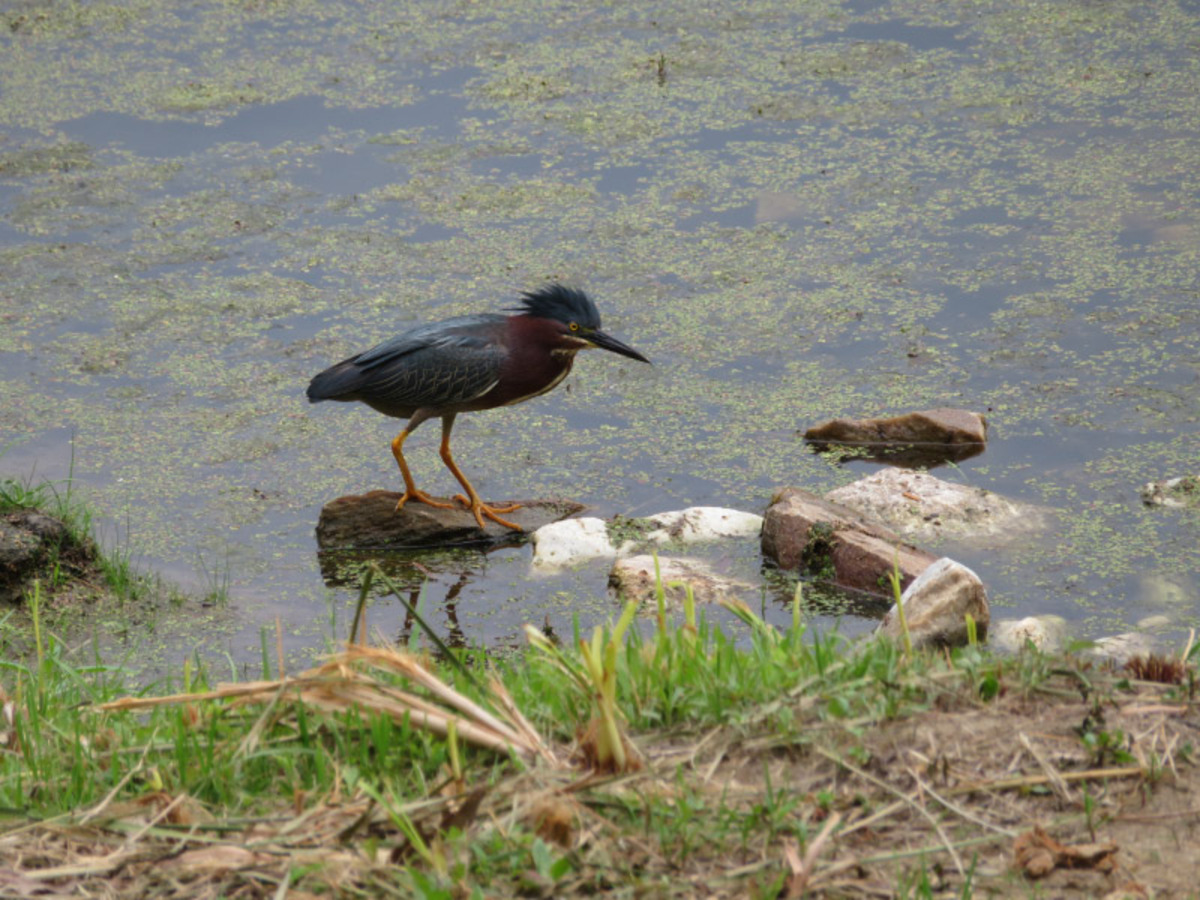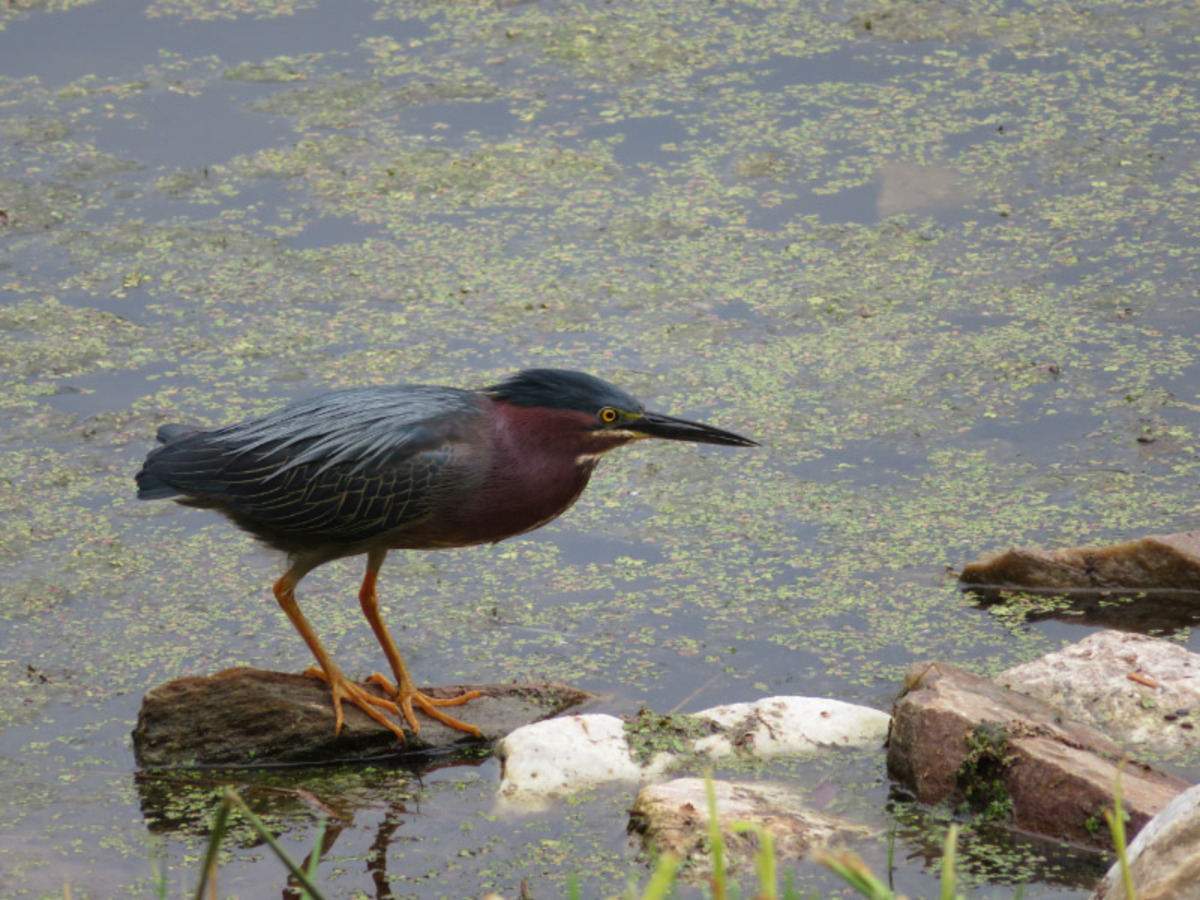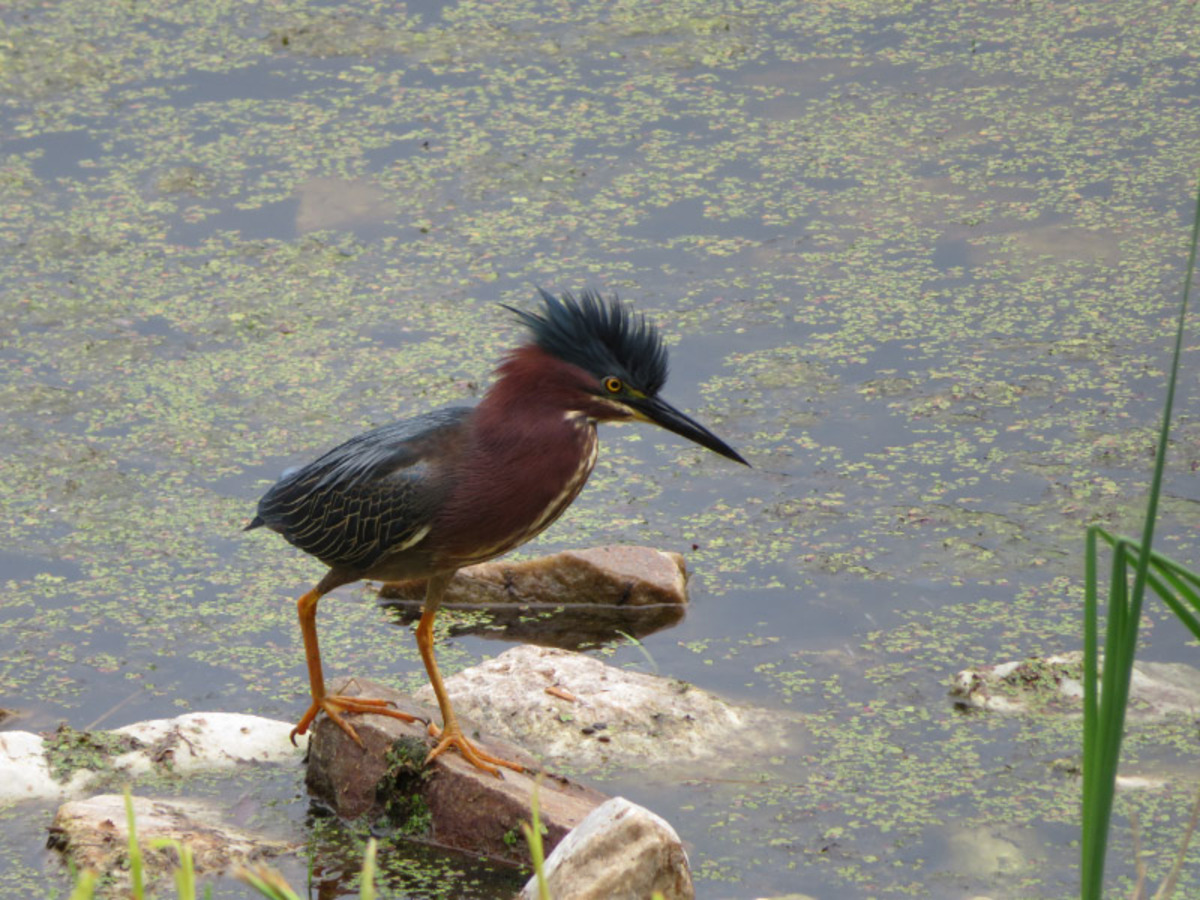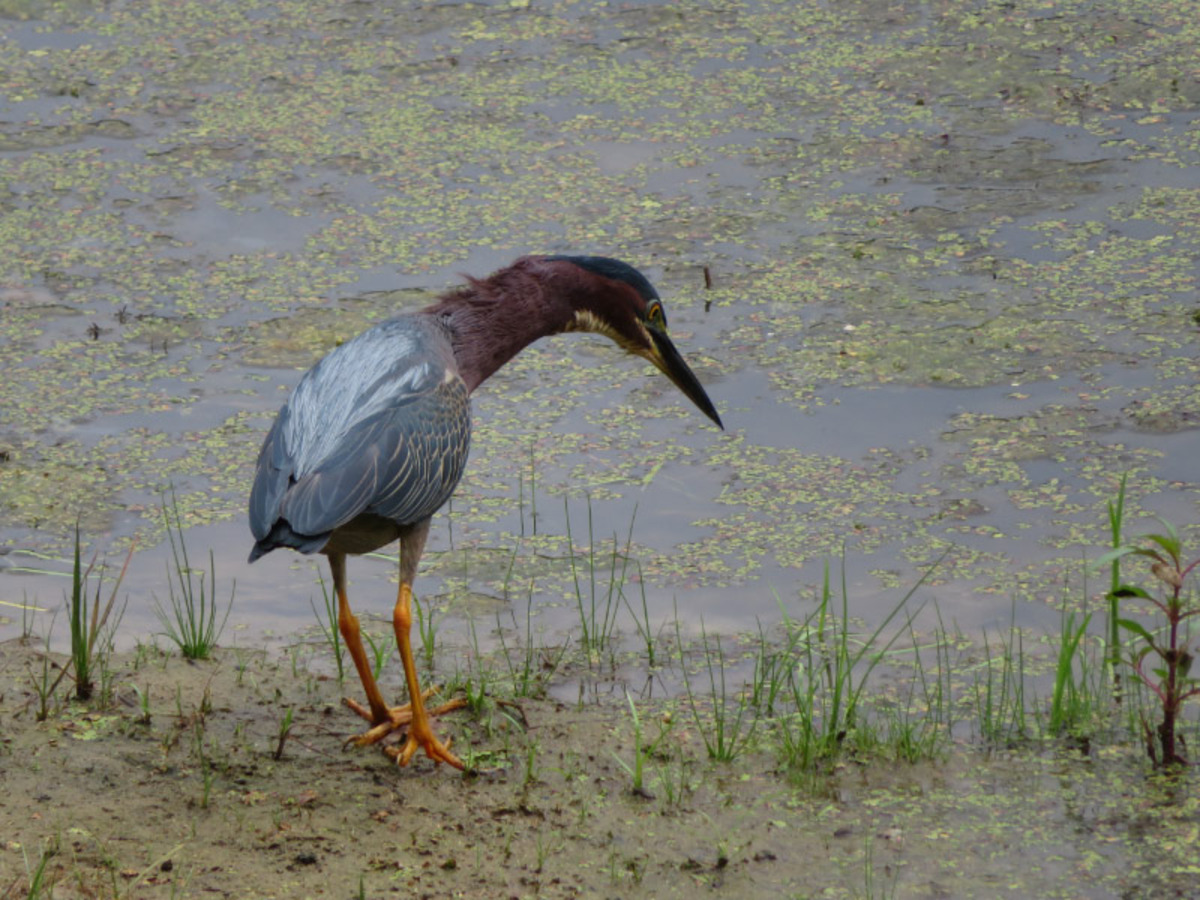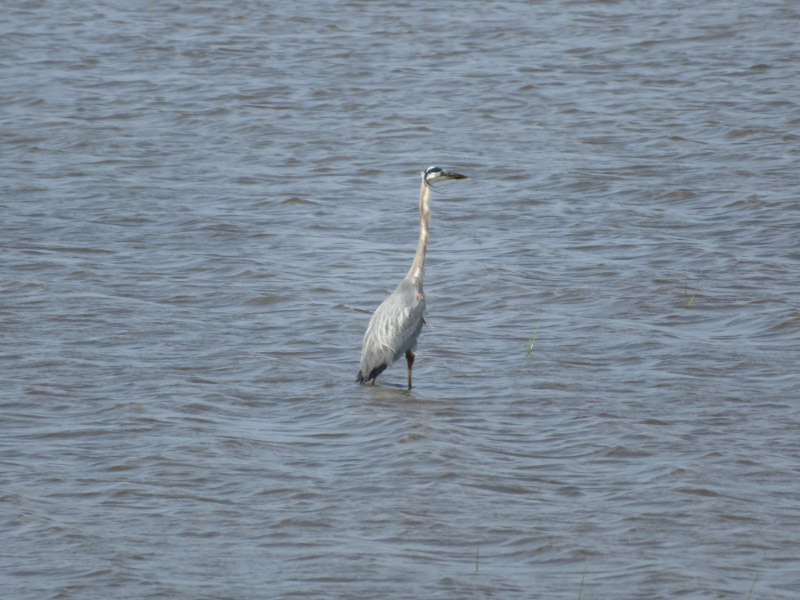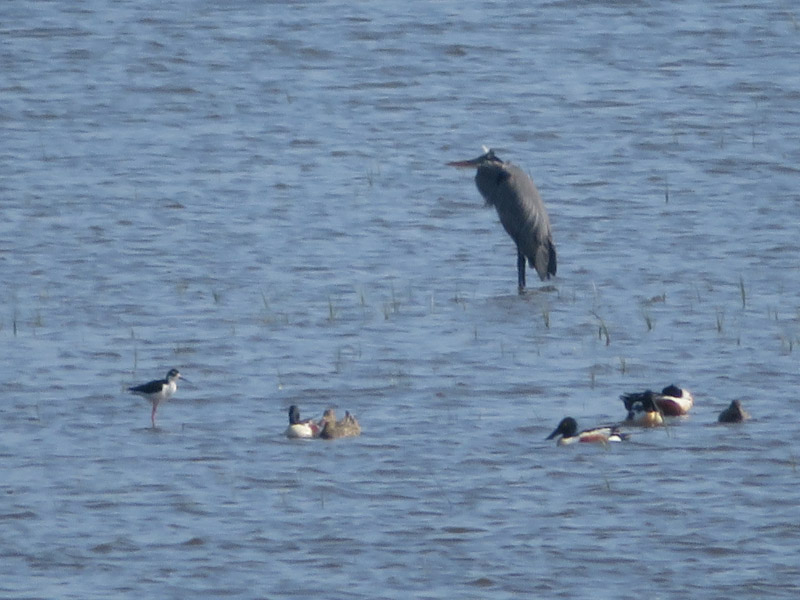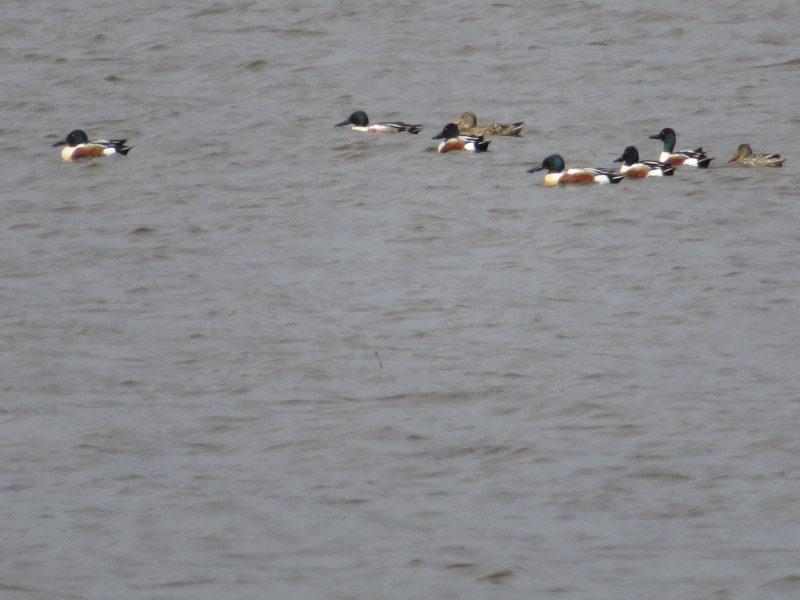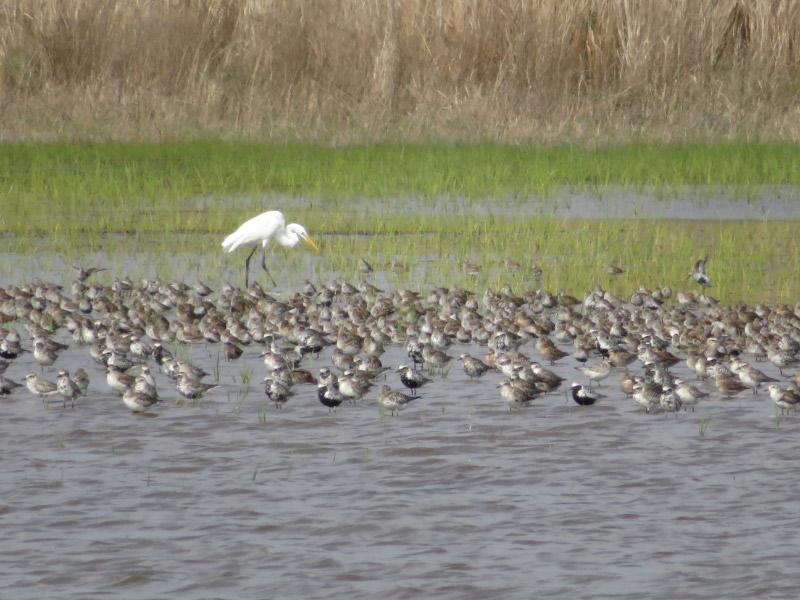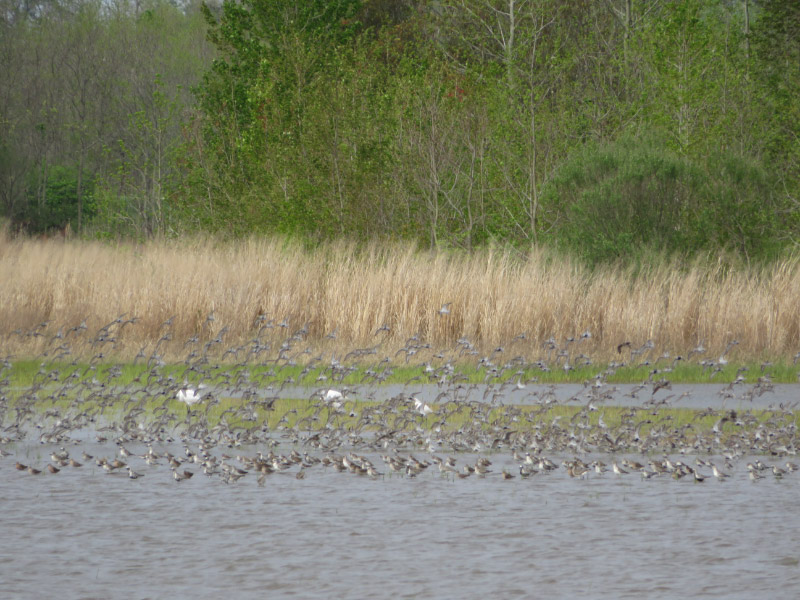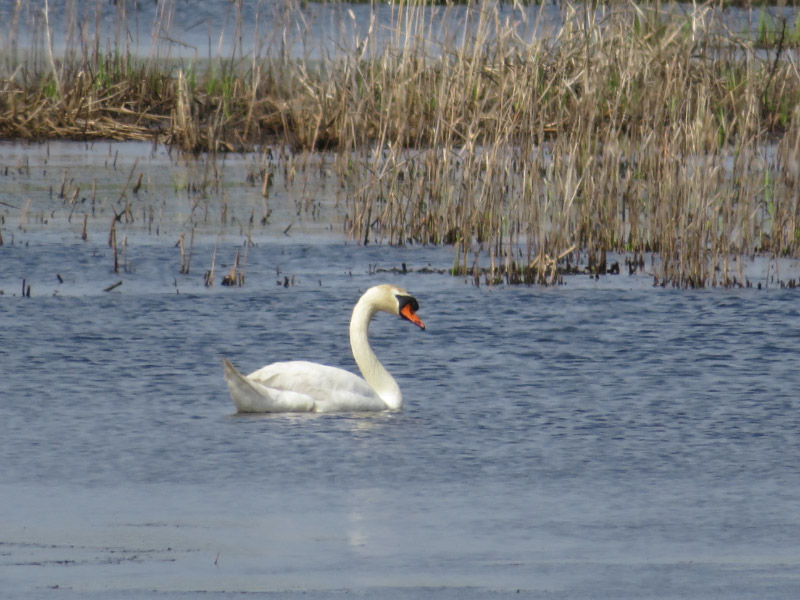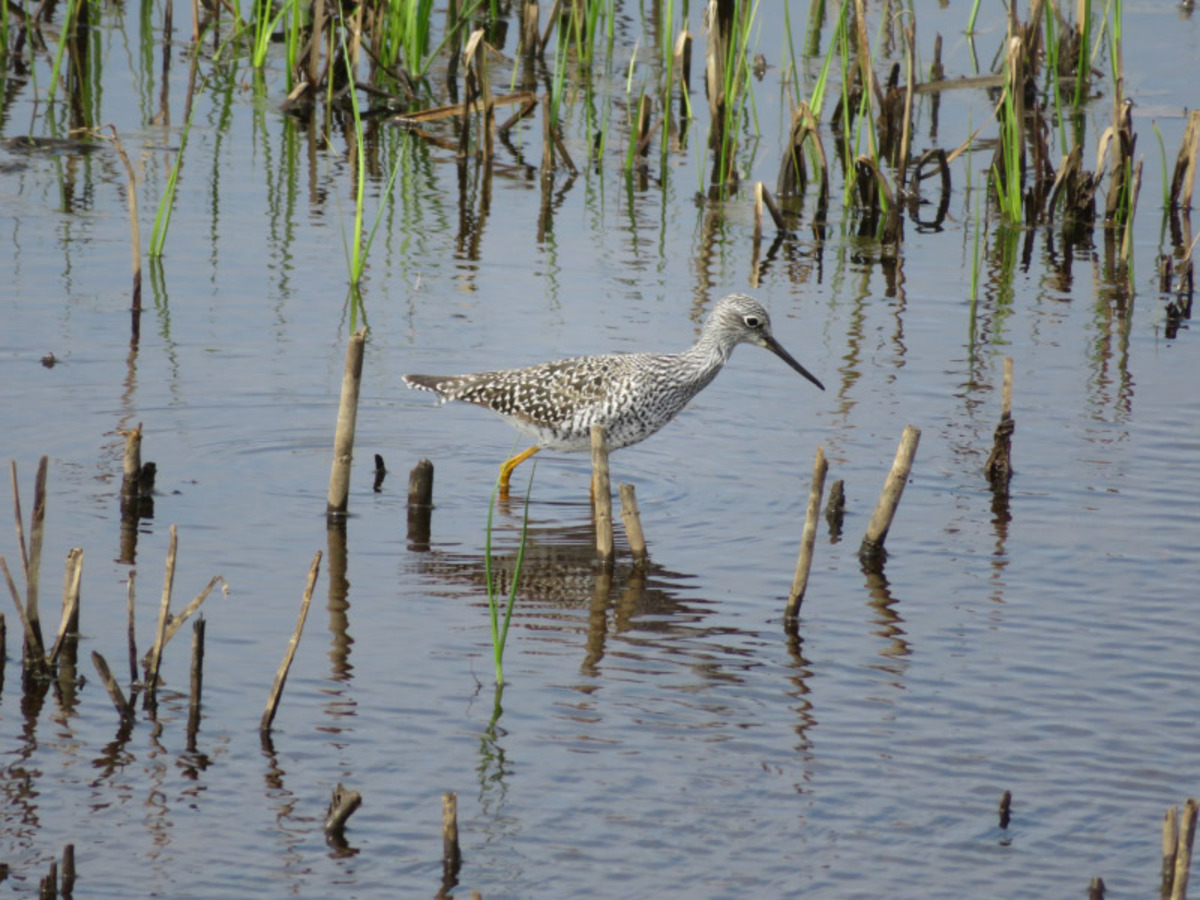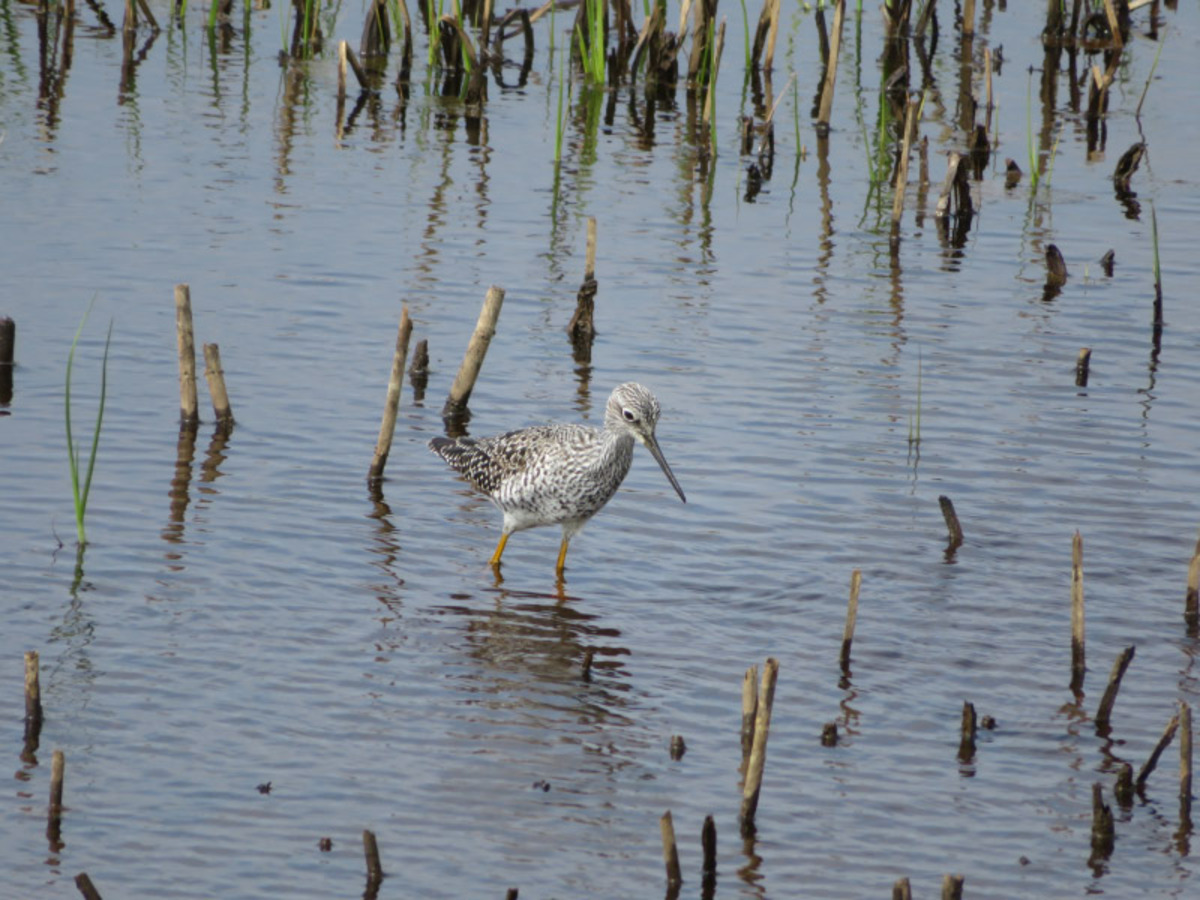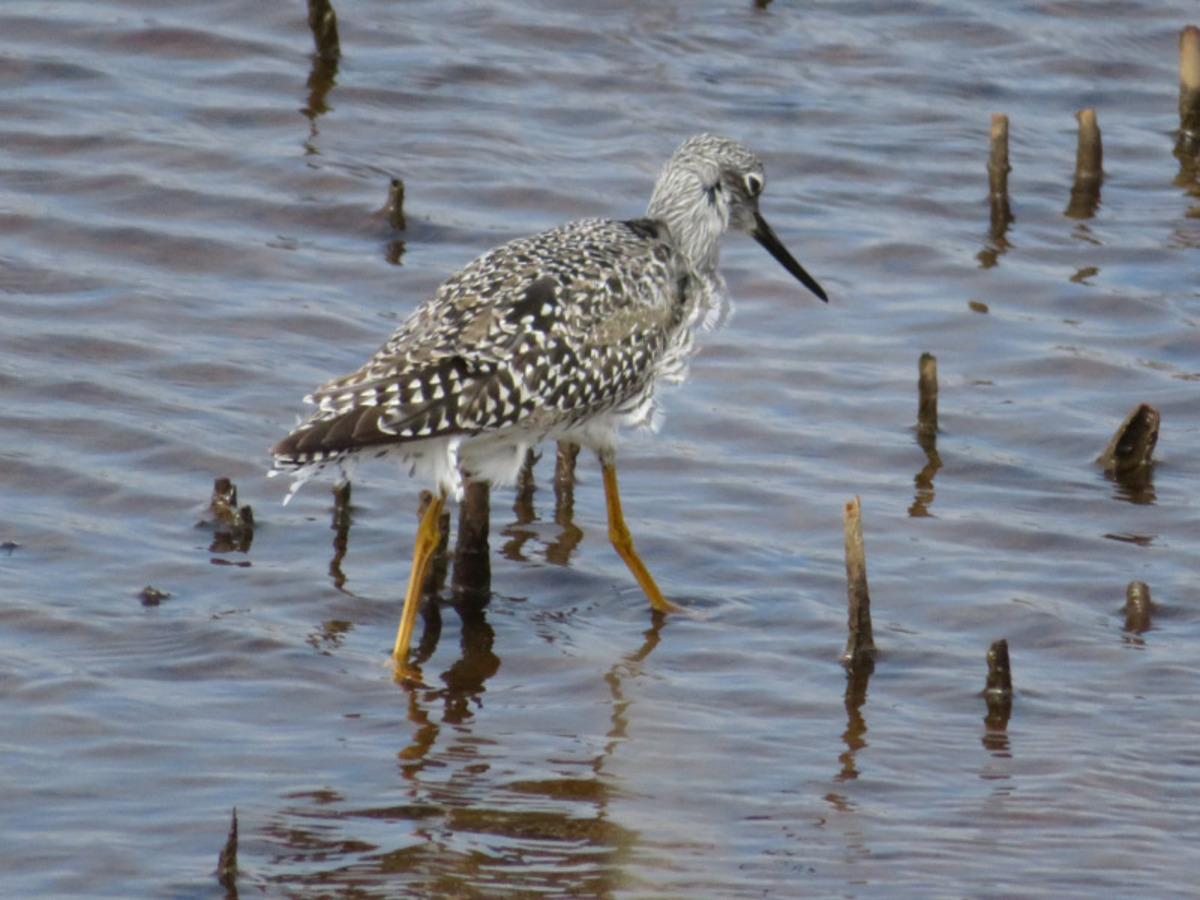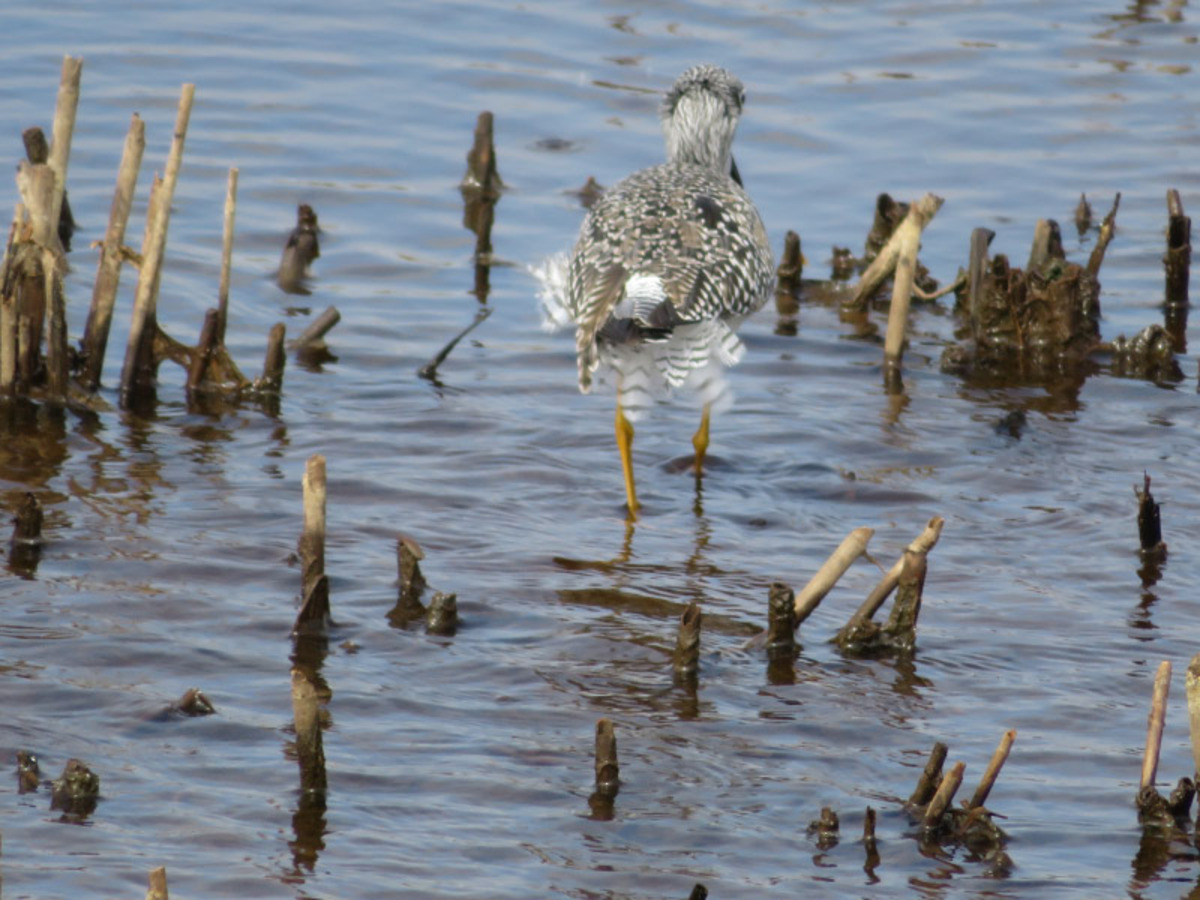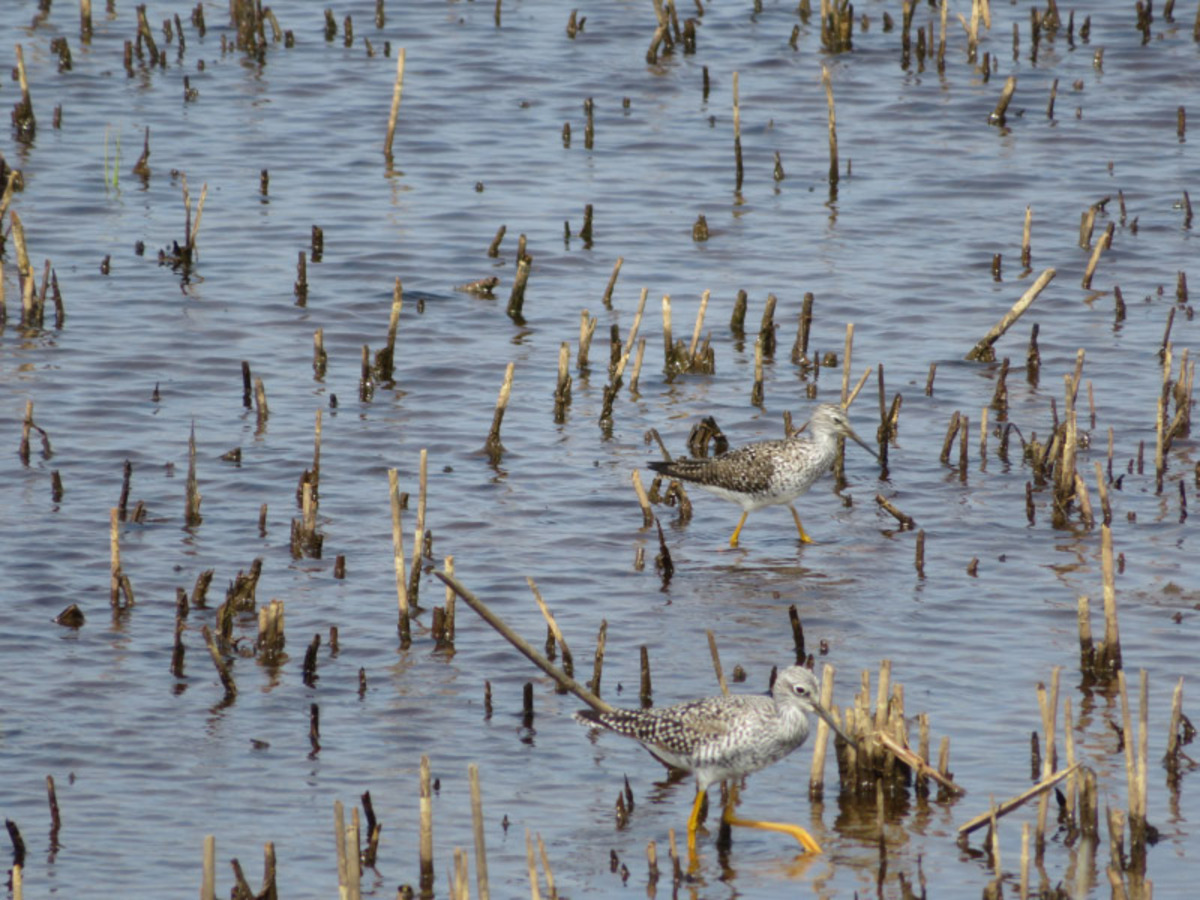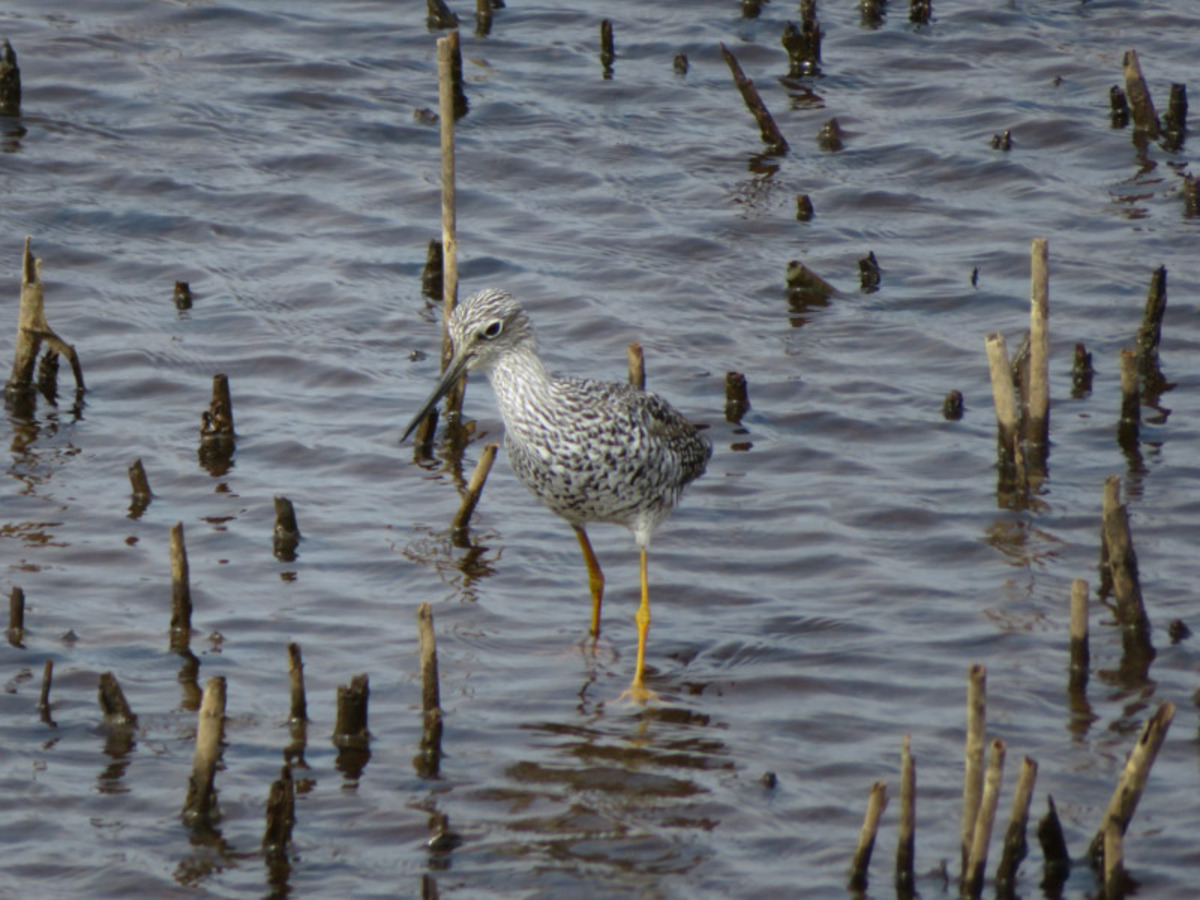Herons at the Neighborhood Pond
/
Our neighborhood pond is still an eyesore – cleaned out with a bulldozer in late spring, most of the vegetation gone, and covered with algae. But it is full of frogs which can sometimes be spotted if you hear plops as they move through the shallows. It’s made the pond a good place for a green heron which I have seen so frequently that it must be a near permanent resident. I always enjoy photographing green herons because they have so many ‘looks.’ Sometimes they look chunky and not much like a heron. Other times the feathers on top of their head stand almost straight up…a bird with a mohawk! Other times their neck elongates but looks very thick and strange for a heron. But sometimes they hold themselves in a pose that looks like most of the other herons (the very last image in the slide show below.
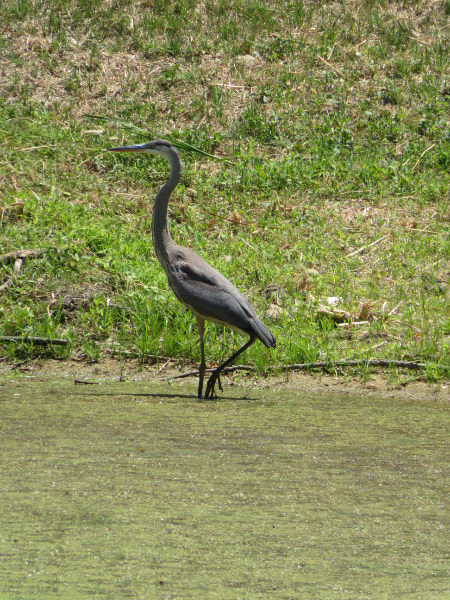




I spotted a Great Blue Heron in the pond last week. It doesn’t have adult plumage and the bill is two-toned so it probably is one that hatched this spring. It has a white spot under its eye which I noticed in several images; maybe that makes it unique. It found a meal near the pond drain but swallowed it before I could see what it was – maybe a frog…or a small fish.
Even though the pond has no visual appeal on its own, I like the birds that are there!

